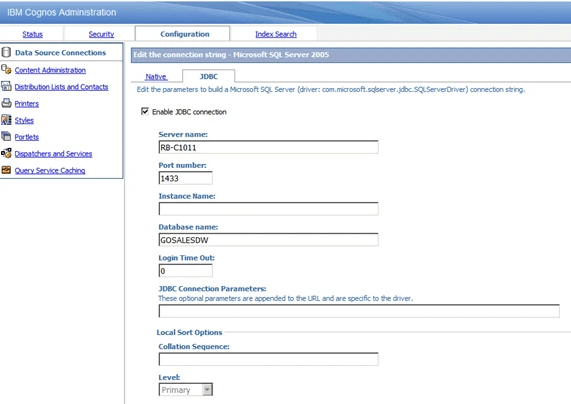Users of database management and business intelligence (BI) systems can create, edit, and optimize queries in real time with the help of the robust feature known as Dynamic Query Mode. It offers a versatile interface for working with big datasets, facilitating quicker decision-making and more logical data exploration. In order to obtain insights and inform strategic actions, data must be efficiently evaluated in current analytics, which makes this method crucial. We will examine the notion of Dynamic Query Mode in this post, along with its main elements, advantages, uses, and implementation-related difficulties.
Also Read Article: Who Is Cy Kass? The Son of Alex Wagner, and Sam Kass
Table of Contents
Dynamic Query Mode: What is It?
The term “dynamic query mode” describes a technique for querying databases in which the logic and structure of the queries are dynamically created or changed in response to user input or evolving circumstances. Dynamic queries are more flexible and yield more pertinent results than static queries, which are predefined and stay the same. This flexibility is especially helpful in situations where predefined queries would be too stiff or sluggish to meet demand and where data needs are continuously changing.
Important Elements of the Dynamic Query Mode
- Formulation of Queries: When using Dynamic Query Mode, human inputs or the particular needs of the data analysis process are used to automatically build the queries. With the help of this functionality, customers can ask more detailed inquiries without having to manually draft intricate SQL expressions. These inputs are converted into optimal queries by the system.
- Parameterization: Using parameters is a fundamental feature of Dynamic Query Mode. In the query, parameters are placeholders that can be changed to actual values as it is being executed. This method minimizes the need for recurrent query authoring and expedites the data retrieval process by allowing the same query to be reused with multiple sets of variables.
- Optimization: To make sure that the generated queries run as quickly as possible, Dynamic Query Mode frequently uses query optimization techniques. It might make use of methods like caching, query rewriting, and indexing, which lessen the strain on the database server’s processing power and yield quicker outcomes.
- Real-time Data Processing: In Dynamic Query Mode, real-time data processing is essential. It enables the system to automatically update a query’s results when new data is received or when its parameters are altered. This capability is especially helpful in situations like financial analysis or operational dashboards, where prompt insights are essential.
The Advantages of Query Mode
- Flexibility and Adaptability: Dynamic Query Mode’s flexibility is by far its greatest benefit. Users don’t need to completely redo the query structure in order to adapt queries on the fly to meet evolving data requirements. Decision-making and data analysis become more accurate as a result of this flexibility.
- Improved Performance: Dynamic Query Mode queries frequently run faster than static queries since they are tuned and customized to certain data conditions. Applications handling vast amounts of data and needing fast turnaround times for insights depend on this performance improvement.
- Enhanced User Experience: Even for non-technical users, data querying becomes easier with Dynamic Query Mode. Natural language processing (NLP) tools and drag-and-drop interfaces make it easier for users to interact with data and obtain the information they require without having to write complicated queries.
- Resource Efficiency: Dynamic Query Mode can assist in lessening the burden on database resources by reusing query structures and streamlining query execution. It guarantees that only pertinent data is processed, reducing pointless calculations and improving system performance in general.
Using Dynamic Query Mode in Applications
Many different fields employ dynamic query mode, such as:
- Business intelligence (BI): Users can generate ad hoc reports and dashboards using BI platforms’ Dynamic Query Mode, which facilitates a more in-depth examination of data trends and patterns. This feature facilitates swift acquisition of actionable insights and data-driven decision-making for enterprises.
- Data Warehousing: Dynamic Query Mode helps maximize query execution efficiency and optimize data retrieval in data warehouses, which contain large datasets. It facilitates the handling of intricate queries involving numerous data sources and extensive aggregations.
- E-commerce Analytics: The use of Dynamic Query Mode is essential for examining sales patterns and consumer behavior on e-commerce sites. Businesses can use real-time data to customize their product offerings and marketing methods, improving customer engagement and driving up sales.
- Financial Services: To track transactions, identify fraud, and evaluate risk, financial organizations employ Dynamic Query Mode. Maintaining the security and integrity of financial processes depends on the capacity to dynamically query data in order to help discover abnormalities and patterns.
Difficulties in Putting Dynamic Query Mode Into Practice
Although dynamic query mode has several advantages, there are many drawbacks as well:
- Complexity: Dynamic QueryMode implementation can be difficult and need a high level of technical know-how. It can be difficult to design a system that can dynamically construct and optimize queries without sacrificing performance.
- Performance Overhead: Because Dynamic QueryMode continuously generates and optimizes queries, it occasionally introduces overhead even though its goal is to increase query performance. It’s crucial to strike a balance between the requirement for flexibility and performance factors.
- Security Risks: If dynamic queries are not adequately guarded, they are more vulnerable to SQL injection attacks. To avoid such vulnerabilities, it is crucial to include strong security features like parameterized queries and input validation.
- Maintenance: It might be difficult to maintain a system that supports Dynamic QueryMode when data structures and requirements change. To guarantee that the system adjusts to evolving data environments, it is imperative to carry out regular updates and enhancements.
Conclusion
A revolutionary method of querying databases that improves flexibility, efficiency, and user experience is called Dynamic QueryMode. It is an indispensable tool for data-driven enterprises due to its capacity to manage massive datasets with efficiency and adjust to changing situations. To effectively handle its complexity and security problems, however, deployment calls for meticulous planning and a thorough understanding of database systems. Businesses may greatly enhance their data analysis and utilization processes with Dynamic QueryMode if they adopt the proper strategy, which will enable them to make decisions more quickly and intelligently.





